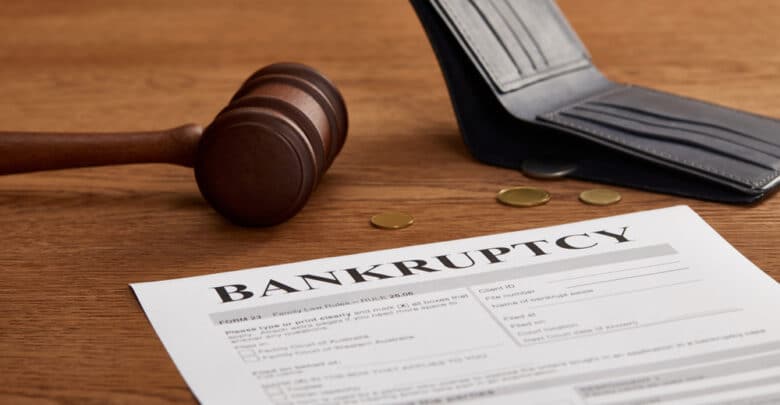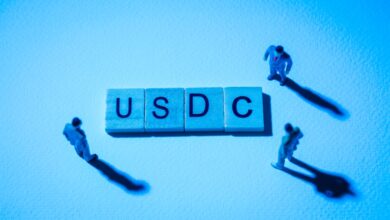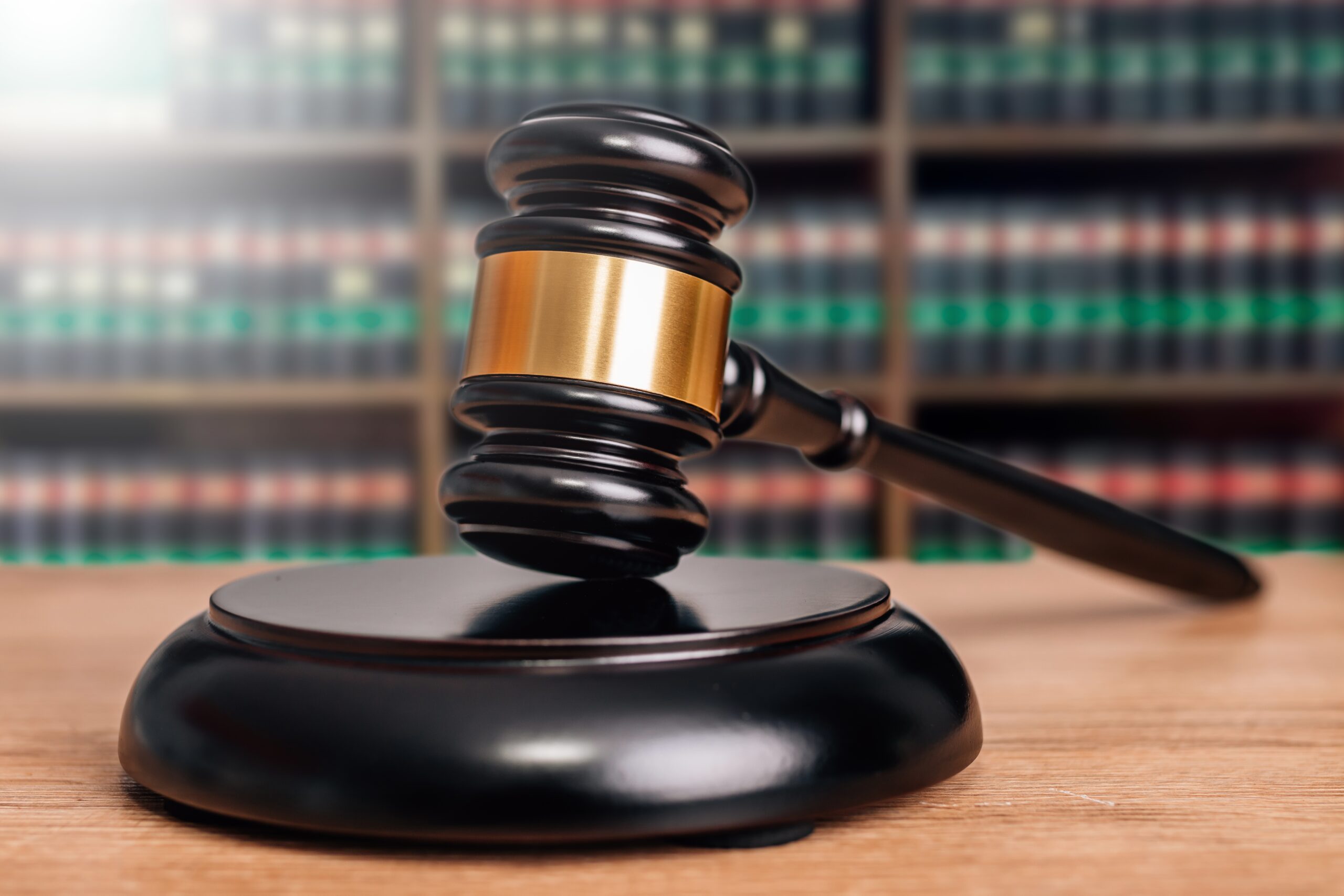All You Need To Know About Chapter 11 Bankruptcy

On 11th November 2022, one of the most significant cryptocurrency exchanges in the world, FTX, filed for bankruptcy under Chapter 11 of the United States Code. It took less than a week for both the once-revered CEO of the firm and the company itself to go bankrupt completely. It is shocking that FTX has collapsed since it was a reliable and straightforward method to acquire cryptocurrency.
After FTX, 130 associated firms filed for bankruptcy as well, and it is believed that the total amount of debt owed by all of these companies is anywhere between $10 and $50 billion. Potentially quite startling pieces of information.
Chapter 11 bankruptcy is the judicial process that incorporates the reformation and reorganization of a tenant’s liabilities and assets. Consumers, private businesses, companies, and organizations may all take advantage of this opportunity, companies being the most typical of their users.
The reorganization makes it possible for the company to keep operating, albeit under constant surveillance and certain criteria that the debtor has to fulfil.
Prior to actually deciding to file for Chapter 11 bankruptcy, any company should undertake a thorough evaluation of all of their potential bankruptcy options and then only opt for it as it is a really long as well as highly costly procedure.
There are certain terminologies that are commonly used when Chapter 11 is concerned.
The term “debtor in possession” refers to the situation that arises when a company that has declared bankruptcy within Chapter 11 is granted permission to continue its operations while being overseen by the debtor.
The “debtor-in-possession” assumes operational management and is responsible for dealing with complaints, taking inventory, and appointing specialists like economists, lawyers, and estate agents.
A “trustee” is responsible for monitoring whether or not a debtor in custody complies with the legal responsibilities court may impose. There are other significant terminologies, too; let us dive quickly into them.
What is Chapter 11 Bankruptcy?
When discussing bankruptcy, there are two primary parties involved: the creditor and the debtor. Both of these parties have a voice in the proceedings. The person who has initiated the bankruptcy process is referred to as the debtor, whereas any organization or individual that has claims against a particular debtor is referred to as the creditor.
Anyone who wants to file for bankruptcy must first present their own unique bankruptcy plea to the Bankruptcy Court, which will then determine the outcome of the application.
Because this Court, which is really a subdivision of the United States District Court, hears hundreds of individual and business bankruptcies each year, the processing of your application may take a little bit more time than usual.
In the United States, debtors often get more favourable treatment than they would in other nations around the world, as this nation has legislation that gives more weight to the process of dissolution over that of reorganization.
Nevertheless, in essence, as per the Bankruptcy Code, the concept that reorganization is much more beneficial than foreclosure. This is due to the fact that reorganization helps maintain enterprises that are beneficial to populations, as well as companies that generate jobs, offer additional useful products and services, as well as pay income tax.
Borrowers are given a second chance when they file for reorganization under Chapter 11 of the United States Code, and creditors are assured larger returns than they would have gotten if the company had gone through the liquidation procedure instead.
Whenever it relates to the restructuring under Chapter 11, there seem to be a few specific aims. In the first place, it gives debtors an opportunity to start over by discharging them from any debts they owe prior to filing for bankruptcy.
Additionally, it gives dissemination that is just and reasonable to all of the debt holders, and it brings together any litigations that involve the debtor in a single location or to a forum where all issues are discussed and sorted out.
In addition to this, it provides debtors with the ability to dissolve unprofitable partnerships while simultaneously providing creditors with better recovery than they might have obtained via liquidation.
How are Person’s Debts and Assets Affected under Chapter 11?
Chapter 11 bankruptcy is unique among all other forms of consumer bankruptcy in that it does not provide a clear outline of exactly what will happen to unpaid debts.
Because some kinds of debts (including student loan debt, overdue child benefits, and tax payments) cannot be discharged via bankruptcy, the payment schedule must have a strategy for how these obligations will be repaid if they are included in the filing.
If a company owes past payments, the obligation to reimburse these must be satisfied within five years. A strategy to repay part or all of the obligations must be proposed by the individual or corporation that files for bankruptcy.
In most cases, those debts may well be repaid back entirely or as a whole over a period of a certain number of years, and a few of them can even be totally cancelled if enough time has passed.
The typical length of time for repayment options is five years, although, in unusual circumstances, the process of filing for Chapter 11 bankruptcy might require up to ten years.
An individual or corporation who files for bankruptcy through Chapter 11 is often allowed to preserve almost all existing properties, despite the fact that the debtor may seek to liquidate a significant number of those investments in accordance with the proposal.
Per Chapter 11 of the bankruptcy code, a company’s owner does indeed have the option of selling the whole company, too, if he wishes to do so.
It is essential to keep in mind that in an Insolvency proceeding, a user’s current finances may be liquidated in addition to paying off the debts incurred by the client.
The founders of companies are not required to be concerned about the likelihood of their possessions being contained in the lawsuit; nevertheless, solitary operators and associates in partnerships are susceptible to getting personal property incorporated into the file.
This would not necessarily imply that individuals will be forced to give up their cash belongings; rather, it only means that those investments may not have the highest level of protection possible.
The Process of Chapter 11 Bankruptcy
The process of bankruptcy, as per Chapter 11, can be divided into the following stages. However, please note that the amount it takes to move from one stage to another can really be told as it varies from person to person and case to case.
Petition
The first step in virtually every Chapter 11 lawsuit is the filing of an application for the process of bankruptcy. In the vast majority of cases, the individual or company that is currently in indebtedness would become the individual who submits this appeal. In order to declare bankruptcy under Chapter 11, individuals will be required to pay a fee of $1,738.
However, it should be noted that the creditor may likewise initiate an obligatory petition for Chapter 11 bankruptcy over you if you fall behind in the payment of your liabilities. Hence, it can be said that both debtor and the creditor can file for it, yet it is usually the debtors signing up for it.
Automatic Stay
When you make a declaration for bankruptcy, your creditors must immediately stop any legal action they were planning to take against you, may that be any judicial proceedings or any other penalties.
This indicates that your creditors are unable to take any action to recover outstanding debts or to execute claims that have been placed against you.
This is because those who qualify for Chapter 11 bankruptcy are afforded some headroom in the form of an automatic stay whilst companies formulate a strategy to reimburse their creditors. The automatic stay, in other words, is a safe zone for debtors where they won’t be penalized for their outstanding dues.
Debtor in Possession
When declaring bankruptcy under Chapter 11, the debtor or borrower in charge plays a highly prominent responsibility during the procedure. The trustees of the bankruptcy proceedings will almost always be the debtor who is currently in charge of the assets.
This indicates that the debtor who is in current ownership is the one who is accountable for making sure that all filing obligations are met and coming up with a restructuring and recovery program that complies with the legislation.
In addition to this, the debtor in possession likewise maintains the right to continue running their company, notwithstanding the Court’s restricted ability to monitor its operations.
Discussion with the Creditor
Immediately following the declaration of bankruptcy, the United States trustee would establish a delegation of creditors to oversee the case. In most cases, the committee would consist of financial creditors who would have seven strong assertions against a borrower.
Naturally, the size of the commission would perhaps be reduced if the individual or the company has less than seven outstanding obligations. A meeting referred to as “section 341” meeting would take place, during which the debtor in charge and the council of trustees will get together.
The delegation representing the bondholder, creditor and borrower will have the chance to develop a turnaround strategy during these sessions.
A strategy that effectively maintains the debtor company operations while still satisfying financial obligations will be included in the restructuring blueprint and would therefore be followed as per Chapter 11.
Drafting of the Plan
In Chapter 11, bankruptcy, the program of reorganization is the driving force behind the process. A reorganization plan gives a person or company the opportunity to maintain a portion of their belongings whilst reimbursing a few of their obligations across a prolonged period of time.
The shareholders of a business always have the option of selling parts or the entirety of their properties in order to settle their financial commitments. The borrower in custody has a maximum of one hundred twenty days to submit a turnaround strategy- the approach he would employ in order to clear his outstanding dues.
Nevertheless, the tribunal has the discretion to lengthen that time to approximately 18 months, too, in some cases.
After a plan has been made by the debtor, creditors have the opportunity to intervene and put up their respective adaptive strategies, given they don’t want to apply the plan given by the debtor. A plurality of creditors needs to agree to approve a proposal before it can go forward.
In order for the authorities to concur that the defendant in control is capable of making the periodic instalments connected with the arrangement, the justices need to be convinced that the strategy would really be followed rigorously just the way it has been told.
Moreover, it should be noted that the arrangement has to be beneficial to the creditors too, and it has to offer them a greater amount of cash than what they would receive through Chapter 7 bankruptcy. That’s the only thing that would make both the creditor and Court agree to the plan.
It likewise has to be unbiased and fair, and the proposal needs to be made in due faith. The sole and only strict condition is that all payments have to be completed within the period of five years, and all the dues must be paid off in the manner promised earlier.
Approval of the Plan
The grantor will schedule a confirmation vote as soon as a considerable proportion of stakeholders have indicated their acceptance of the arrangement.
If the proposal has been endorsed by the investors and if it complies with the conditions set out by the statute, it has a good chance of being authorized by the court system too. The time allotted for making payments starts as soon as the contract is accepted.
Plan Arrangement
The debtor who is in charge of the assets will be the one to put the plan into effect after it has been devised. This suggests, in most circumstances, that the debtor should probably keep making repayments on a periodic basis until all of the duties outlined in the agreement have been met.
It is likely that the plan may compel the debtor to sell some possessions and then divide the revenues among their numerous creditors. If this is the case, the debtor will have to comply with the terms of the plan. It is entirely dependent on the approach that you have devised as to how long the payback component of the plan will take; it may take several months or even years.
There is no fixed amount of time as everything is dependent on the amount of debt you have to pay and the agreements your creditor has agreed to.
If the participant in the repayment plan has fulfilled all of the terms and conditions of the plan, then the remaining obligations may be discharged. This means that the borrower is no longer accountable for making payments toward the loan and that the creditor is precluded from taking any legal action against the debtor.
Because it will no longer be necessary for the debtor to repay the obligations, they will be free to focus on bettering both their financial situation and their credit score.
Chapter 11 vs. Chapter 7 Bankruptcy
A lot of people are in constant confusion regarding Chapter 11 and Chapter 7. Are they the same?
Whenever a firm finds itself in a precarious position financially, it has numerous options available to it for filing for bankruptcy. The much more typical variations are chapters 11 and 7, respectively.
Chapter 11 and Chapter 7 may seem to be comparable, yet, there is a significant difference between the two. In one kind of bankruptcy, the properties are sold off, whereas in the other type, the debts are reorganized.
A bankruptcy filing under Chapter 7 is frequently referred to as a “liquidation” bankruptcy. After getting through the early step of the reorganization process, organizations shift their attention to disposing of away their existing holdings. In the majority of cases, the bankruptcy judge will designate a trustee to oversee the distribution of payments among creditors in the appropriate sequence.
The laws of indisputable possession should be followed while carrying out that right sequence. For instance, secured debt has priority over any other type of debt, such as unsecured debt. As a direct consequence of this, such obligations are the initial obligations to be settled.
After they have been completely off, the outstanding income and properties are usually combined together and then dispersed to creditors who have unsecured debt.
In addition to the expenses for registering for Chapter 11 being rather costly, throughout the procedure of reorganization, the company is required to make courtroom appearances on many occasions. Lastly, in contrast to Chapter 7 bankruptcy, Chapter 11 gives companies the opportunity to restructure their obligations and emerge from the process as stronger businesses.
Hence, despite common grounds, it can be said that Chapters 11 and 7 are really different from one another.
Tokenhell produces content exposure for over 5,000 crypto companies and you can be one of them too! Contact at info@tokenhell.com if you have any questions. Cryptocurrencies are highly volatile, conduct your own research before making any investment decisions. Some of the posts on this website are guest posts or paid posts that are not written by Tokenhell authors (namely Crypto Cable , Sponsored Articles and Press Release content) and the views expressed in these types of posts do not reflect the views of this website. Tokenhell is not responsible for the content, accuracy, quality, advertising, products or any other content or banners (ad space) posted on the site. Read full terms and conditions / disclaimer.







